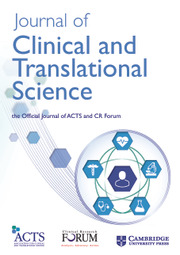No CrossRef data available.
Article contents
507 A Comparison of Regulatory Mechanisms for the Approval of Herbal Medicines
Published online by Cambridge University Press: 03 April 2024
Abstract
OBJECTIVES/GOALS: To compare the herbal medicine (HM) programs of the U.S. to those of different countries–including the European Union, South Korea, China, and India–and to examine each regulatory body’s process for obtaining market approval for HM drugs. METHODS/STUDY POPULATION: The European Union, South Korea, China, and India’s respective HM regulatory programs were examined and compared to the U.S. FDA’s HM process. These specific regulatory bodies were chosen based on the country’s long history with HM and/or the robustness of their existing HM review processes. International HM programs were researched using official government websites and journals published by independent, external research institutions that were accessed via USC’s library services. Data regarding the efficacy of HM policies such as HM IND approval rates, number of marketed HM drugs, and establishment of unique HM sectors will be collected. RESULTS/ANTICIPATED RESULTS: Investigational New Drug (INDs) applications regarding HM from each country will be categorized and displayed according to their approval status in order to provide insight on a HM program’s efficiency. Results also included a table displaying common challenges for approval for HM drugs across federal regulatory bodies. If applicable, effective solutions implemented to address some of these obstacles that proved to be effective will also be displayed in the form of a table. DISCUSSION/SIGNIFICANCE: Tables displaying the collective flaws of international HM programs and the resulting regulatory solutions can provide clearer guidance for companies seeking to submit HM INDs and for the U.S. FDA seeking to develop improved HM regulations.
- Type
- Regulatory Science
- Information
- Creative Commons
- This is an Open Access article, distributed under the terms of the Creative Commons Attribution-NonCommercial-NoDerivatives licence (https://creativecommons.org/licenses/by-nc-nd/4.0/), which permits non-commercial re-use, distribution, and reproduction in any medium, provided the original work is unaltered and is properly cited. The written permission of Cambridge University Press must be obtained for commercial re-use or in order to create a derivative work.
- Copyright
- © The Author(s), 2024. The Association for Clinical and Translational Science


